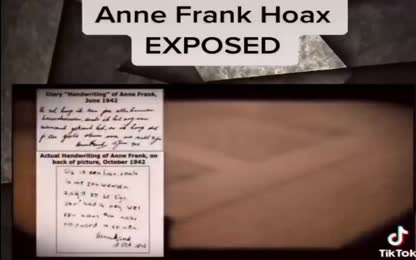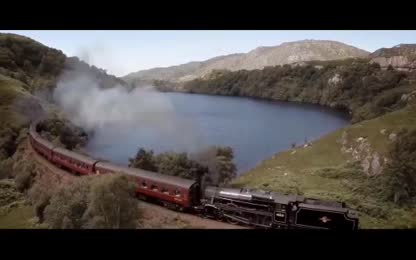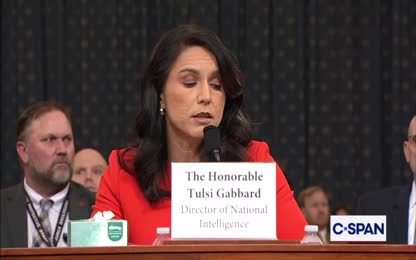Advertisement
Amtrak Hoax - Part 3 - Show Me the Funding
Amtrak Hoax - Part 3 - Why would both Democrats & Republicans be in Favor of a Staged AmTrak Derailment? Most people would understand why Union-Loving Democrats would want to push the Amtrak Agenda, but why would the Trump Admin? This video shows us everyone's agenda's, and proves again there is no difference between the Right vs. Left Paradigm.
- Category: Uncategorized,Amtrak Washington Derailment,False Flag / Hoax ,Fake News / Fake News Inc
- Duration: 14:40
- Date: 2018-02-02 13:52:22
- Tags: amtrak hoax
3 Comments
Video Transcript:
I Leave Ha! Wait! Don't close the ball! Like an actual M-DRAC train, this is dangerously out of control! That's legally defensible, by the way. On your screen is a list of actual rail disasters! I just, I just, I'm on my real train now. Come on, baby, do the lot, I'm on my set. I'm on my way to the station. I'm on my way to the station. I'm on my way to the station. I'm on my way to the station. I'm on my way to the station. I'm on my way to the station. I'm on my way to the station. I'm on my way to the station. I'm on my way to the station. I'm on my way to the station. I'm on my way to the station. I'm on my way to the station. I'm on my way to the station. I'm on my way to the station. I'm on my way to the station. I'm on my way to the station. I'm on my way to the station. I'm on my way to the station. I'm on my way to the station. I'm on my way to the station. I'm on my way to the station. I'm on my way to the station. I'm on my way to the station. I'm on my way to the station. I'm on my way to the station. I'm on my way to the station. I'm on my way to the station. I'm on my way to the station. I'm on my way to the station. I'm on my way to the station. I'm on my way to the station. I'm on my way to the station. I'm on my way to the station. I'm on my way to the station. I'm on my way to the station. I'm on my way to the station. I'm on my way to the station. I'm on my way to the station. I'm on my way to the station. I'm on my way to the station. I'm on my way to the station. I'm on my way to the station. I'm on my way to the station. I'm on my way to the station. I'm on my way to the station. I'm on my way to the station. I'm on my way to the station. I'm on my way to the station. I'm on my way to the station. I'm on my way to the station. I'm on my way to the station. I'm on my way to the station. I'm on my way to the station. I'm on my way to the station. I'm on my way to the station. I'm on my way to the station. I'm on my way to the station. I'm on my way to the station. I'm on my way to the station. I'm on my way to the station. I'm on my way to the station. I'm on my way to the station. I'm on my way to the station. I'm on my way to the station. I'm on my way to the station. I'm on my way to the station. I'm on my way to the station. I'm on my way to the station. I'm on my way to the station. I'm on my way to the station. I'm on my way to the station. I'm on my way to the station. I'm on my way to the station. I'm on my way to the station. I'm on my way to the station. I'm on my way to the station. I'm on my way to the station. I'm on my way to the station I'm on my way to the station. I'm on my way to the station. I'm on my way to the station. I'm on my way to the station. Let's face it, trains kind of suck in America. They're slow, expensive, and just don't exist in many parts of the country. The simple reason for this is because the US is so sparsely populated. Aside from here, here, and here, cities just aren't close enough together to make train travel faster or cheaper than plane travel. When cities are within 200 to 300 miles of each other, it's often faster to take a train from downtown to downtown, rather than driving to an airport, checking in, going through security, flying, than driving downtown. However, as I mentioned, they're definitely our regions in the US with cities this distance away from each other, so why do trains still suck? The United States has the geography to support trains in certain areas, and yet a train from DC to New York costs at least $49 and takes three hours and 29 minutes, only 30 minutes less than driving. A train from Rennes to Paris, France, a very similar distance, costs 27 euros, the equivalent of $30 and takes only two hours and four minutes. The US does have one high speed train, the Sella Express, but it costs at least $120 for a ride from DC to New York and still takes two hours and 50 minutes. Turkey, Poland, and Uzbekistan all have trains that travel faster than America's fastest train. Alright, so understanding the whole issue requires a bit of background knowledge. Back in their heyday, railroads in America were amazing. We built our first in 1826 and had a transcontinental line by 1869, only 19 years after California even became a state. Trains traveled almost everywhere, and most historians agree that the development of railroads was an absolutely crucial catalyst to the American industrialization period from 1843 to 1860. They even prompted the US to create one of the world's first standardized time systems as discussed in an old video of mine which you can find here. While passenger trains could sometimes be profitable, freight services were where the real money was. So most rail companies basically ran passenger services as a mobile advertisement for their freight services to the executives that would decide which company to ship goods on. Trains were, after all, the most glamorous and efficient way to travel. However, as cars became popular in the 30s and planes became popular in the 50s, there was little purpose anymore to set up passenger services as advertisements to executives who would be taking the more trendy car or plane instead. At this point, the few profitable passenger services only made money because of their contracts with the US Postal Service. Most trains would have one car that served as a railroad post office, an office on wheels where workers would sort letters in route to the destination to save time. In the 1960s, mail sorting was mechanized, trucks and planes began to transport letters, and railroad post offices were discontinued. It became essentially impossible to make money with a passenger railroad. By the end of the 1960s, the only thing keeping the few passenger routes alive was a legal obligation by the Interstate Commerce Commission for the train companies to keep running those routes. But then Amtrak came along. In 1970, President Nixon signed into law the Rail Passenger Service Act which formed the federally funded National Rail Company that promised to save and make great again passenger rail travel. But then Amtrak came along. In 1970, President Nixon signed into law the Rail Passenger Service Act which formed the federally funded National Rail Company that promised to save and make great again passenger rail travel. Except it didn't. In the United States, a nation of 319 million people, Amtrak operates a mere 300 train journeys a day. While in France, a nation of 66 million people, the Société National Dixie-Mande de Faire français, also known as SNCF, operates 14,000 trips every single day. 800 to which are high speed. One common criticism of Amtrak is its unreliability. On average, only 72% of Amtrak's trains arrive on time. The California's Efer route from Chicago to San Francisco even arrived on time a poultry 31% in June of 2016. So what does Amtrak blame the delays on? Freight trains. You see, Amtrak only owns 730 miles of the 21,300 miles of track it operates on. On the California's Efer route, you need Pacific owns about half the track and BNSF owns the other half. According to Amtrak, only 1.4% of all delays on this route were their fault. The other 98.6% were reportedly the fault of the rail companies who owned the track. BNSF will naturally lend priority to their own trains on their tracks instead of Amtrak's, so Amtrak trains are often told to wait to let a freight train pass. After all, a stalling Amtrak can go and use competing tracks, so there's little incentive to give priority to passenger trains. Most rail operators in Europe don't have this problem. In France, for example, the National Rail Company owns all the track, so priority can be given to passenger trains. Also, only 8% of freight in Europe is moved by rail compared to 38% in the United States, so there are far fewer freight trains congesting the tracks. Since Amtrak is so young, they never got the opportunity to build their own tracks. The Northeast Corridor, which is absolutely perfectly shaped to have a high speed rail network with five major urban centers located on a straight line, built up its rail system in the 1800s, and the railroad had such an impact that towns and people flocked to the area around it. For that reason, this area is incredibly densely populated, and there truly is no open space between the cities. Consequently, it would be unbelievably expensive to raise a bunch of houses and build a new, straighter route of high speed tracks from DC to New York. Amtrak says it would cost an estimated $151 billion to build tracks up to the spec of France's high speed rail network in the Northeast Corridor. Since the Northeast Regional, the train running between DC Baltimore, Philadelphia, and New York and Boston is one of the few routes that makes money. There's little incentive for Amtrak to sink a lot of funds into upgrading the tracks. Additionally, American cities just aren't built like many European cities. With population densities averaging lower than 15,000 people per square mile, cities in the United States are far less walkable than their European counterparts, which can have as many as 55,000 people per square mile. Due to their ancient routes, European cities naturally develop compact urban cores, since for all but the rich, there was no option but to walk everywhere. In that, it's much easier to walk to your destination from a train station in a European city than it is in an American city. It's believed that since most Americans have to take another form of transport to get to their destination after taking the train in America, they see the train as not that much more convenient than the plane, where you also have to take another form of transport to get to your final destination. So what's the solution? How should America fix its rails? Well, unfortunately, we'll probably never get a big network of fancy high speed lines like in France or Germany. There are dozens of plans in the US to build high speed rail lines, however, few of them will likely come to fruition. There is a high speed rail line currently being built between Miami and Orlando by a private company called All aboard Florida. However, with the top speed of 125 mph, the service will only be slightly faster than driving due to speed restrictions on many parts of the route. The state of California is also building a high speed rail line between San Francisco and Anaheim with an estimated transit time of two hours and forty minutes, which would be less than half the driving time between the two cities. Despite construction already beginning, phase one of the project isn't estimated to be completed until 2029, and public support is diminishing. Many have proposed that America shouldn't be concerned with building a flashy high speed network. Amtrak's $151 billion proposal for a true high speed northeast corridor system divides down to $320 million per mile, or $60,000 per foot of high speed track. It would be far more efficient, would be to upgrade current track to allow trains to operate at their top speeds. On the northeast regional route, trains reach a top speed of 125 mph briefly, and if they operated at that speed for all of the DC to New York leg, the trip would take only slightly longer than two hours. Small improvements can cut minutes from the journey time, which can add up to hours. Unfortunately, Amtrak is second to right, where they have no money to improve anything, which causes low ridership, which worsens the problem of no money. Essence, yes, and France is so great because taxpayers pay for about half of the operating cost of every journey, while Amtrak is designed to be a for-profit yet government subsidized corporation. Right now, Amtrak is kind of like the neglected little brother in the US transit family who doesn't get any money, and until that changes, we're still going to have our slow, expensive trains. The first time we've ever had a train, we've never had a train, but we've never had a train. So, I'm going to have to go to the airport, and I'm going to have to go to the airport, and I'm going to have to go to the airport, and I'm going to have to go to the airport, and I'm going to have to go to the airport, and I'm going to have to go to the airport, and I'm going to have to go to the airport, and I'm going to have to go to the airport, and I'm going to have to go to the airport, and I'm going to have to go to the airport, and I'm going to have to go to the airport, and I'm going to have to go to the airport, and I'm going to have to go to the airport, and I'm going to have to go to the airport. Show me the money I'm going to buy you a new one I'm going to buy you a new one I'm going to buy you a new one I'm going to buy you a new one I'm going to buy you a new one I'm going to buy you a new one I'm going to buy you a new one I'm going to buy you a new one I'm going to buy you a new one I'm going to buy you a new one I'm going to buy you a new one










 Donate
Donate







